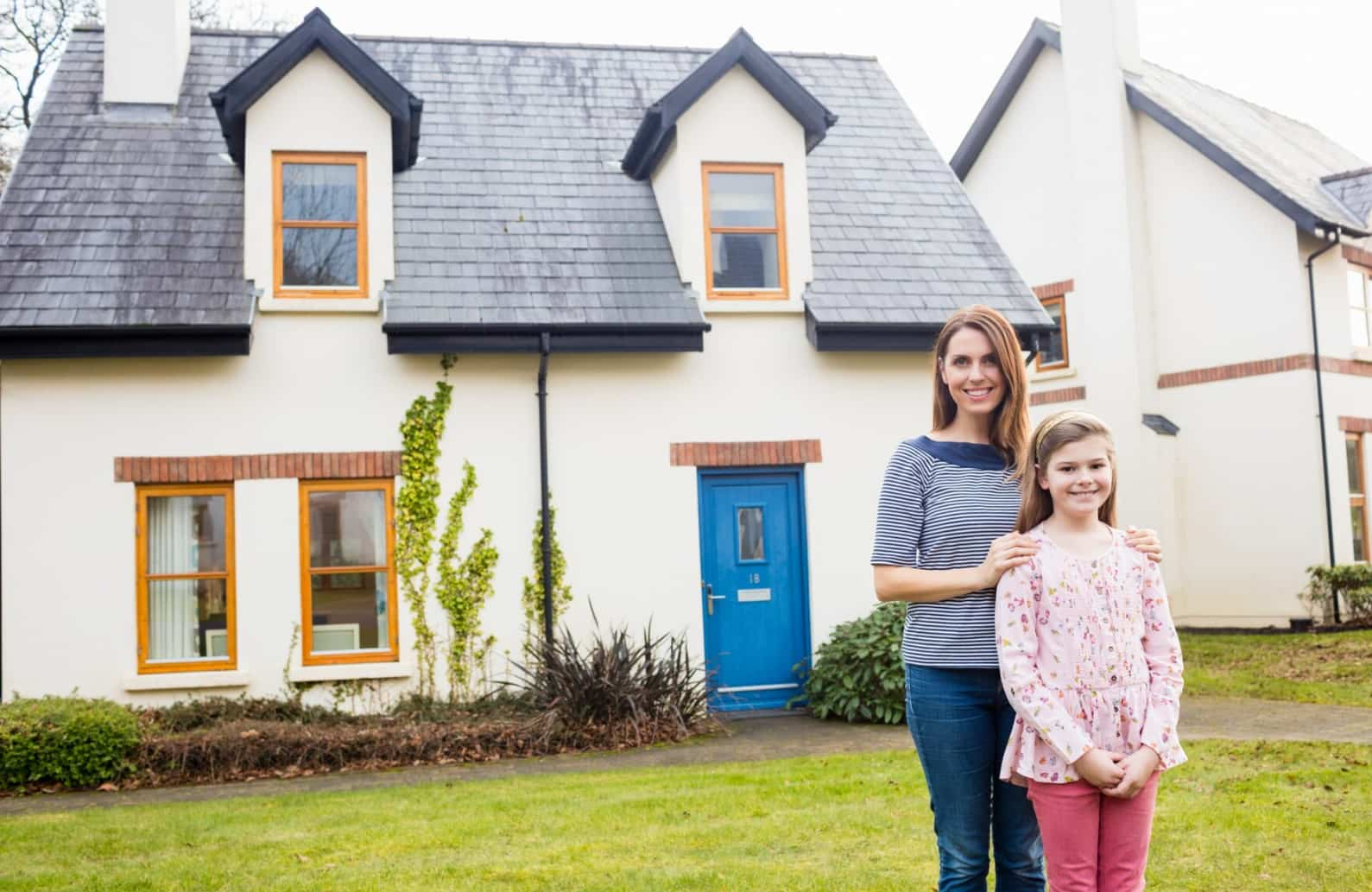Hey there! Have you ever wondered how tall the typical house is in jolly old England?
Well, wonder no more! Today, we’re diving deep into the fascinating world of UK home heights.
How Tall is a House in the UK?

We’ll explore the averages for different types of houses, the key factors that determine a home’s height, and much more.
So put on your thinking cap and let’s get started!
What’s the Average Height of a House in the UK?
Before we get into the nitty-gritty details, let’s answer the big question: how tall is the average house in the United Kingdom?
Well, the height of a UK home can vary quite a bit depending on the type of house and where it’s located.
But in general, here are the typical height ranges:
- Single-storey houses: Around 11 feet (3.5 meters) tall
- Two-storey houses: About 20 feet (6 meters) tall
- Three-storey houses: Usually 30 feet (9 meters) tall
Keep in mind, that these heights include the interior living spaces. The actual exterior height might be a tad different based on the roof style and building materials used.
Single-Storey House Heights
Let’s start with the shorties – single-storey homes.
In the UK, these quaint abodes usually have:
- Floor-to-ceiling height of around 2.4 meters
- Total height (including the roof) of roughly 3 to 4 meters
So if you’re not a fan of stairs, a single-storey home might be just the ticket!
Two-Storey House Heights
Moving on up to two-story homes – the most common type of house in the UK.
For these bad boys, you can expect:
- Each floor is about 2.4 meters high
- An extra bit of height for the roof structure
- Total height of approximately 6 to 8 meters
That’s plenty of space for a family to spread out and enjoy!
Three-Storey House Heights
For those who like to live largely, there are three-story houses.
These giants of the neighborhood typically feature:
- Each storey at around 2.4 meters tall
- A complete structure between 7 and 9 meters high (including the roof)
Three-story homes are perfect for big families or those who love to entertain!
Factors That Determine a UK House’s Height

Okay, so now you know the basics of UK house heights. But what factors determine how tall a home will be?
Here are the big ones:
- Number of Storeys
The number of floors a house has is the biggest factor in its height. Most houses are two stories to provide enough living space without going overboard in height.
- Roof Design
The style and pitch of the roof play a big role in a home’s height too. A flat roof won’t add much height, but a steep pitched roof can make a house much taller.
- Building Regulations
There are rules and regulations in the UK that dictate how tall houses can be. In most cases, a standard house can’t be taller than 11 meters without special permission.
- Location, Location, Location
Different parts of the UK have different guidelines for house heights. Some places have specific rules to maintain the historical look and feel of the area.
- Construction Materials & Techniques
The materials and methods used to build a house can influence its height as well. For instance, a steel-framed house might allow for higher ceilings than a traditional brick home.
- Purpose & Functionality
Of course, the height of a house needs to make sense for the people living in it. It’s all about balancing the need for space with the constraints of budget, regulations, and structural integrity.
Single-Story vs Multi-Story Heights
Let’s break it down and compare single-story and multi-story homes:
| Feature | Single-Story | Multi-Story |
|---|---|---|
| Avg Height | 10-12 feet | 20-30 feet |
| % in UK | 65% | 35% |
| Common Locations | Suburbs, Rural Areas | Cities, Urban Centers |
| Cost to Build | Lower | Higher |
| Energy Efficiency | Usually Better | Varies |
Pros & Cons of Taller Homes
Sure, a taller house means more space. But is bigger always better? Here are some pros and cons to consider:
Pros:
- Better views & natural light
- Space-saver in urban areas
- Can boost property value
- Better noise insulation
- Prestige and exclusivity
- Potential for eco-friendly design
Cons:
- Higher risk in high winds
- Harder to evacuate in an emergency
- Can be tougher to sell
- More expensive to maintain
- Accessibility challenges
- Stricter fire safety rules
Architectural Styles & Heights
The style of a house plays a big role in its height too. Here’s a quick look at some popular UK architectural styles and how they measure up:
- Georgian Style (1714-1830): Known for symmetry and classical proportions. Usually 2-3 storeys.
- Victorian Style (1837-1901): Characterized by decorative details, bay windows and pitched roofs. Typically 2-3 storeys.
- Edwardian Style (1901-1910): All about large windows, spacious rooms, and welcoming front porches. Generally 2-3 storeys.
- Tudor Style (1485-1603): Iconic for its timber framing, massive chimneys and ornate half-timbering. Usually 2 storeys.
- Modernist Style (20th Century): Focused on simplicity, clean lines, and integration with the environment. Height varies widely.
- Cottage Style: The quaint countryside classic with thatched roofs, petite windows, and rustic charm. Typically 1-1.5 storeys.
- Contemporary Style: Embraces minimalism and open-concept living with ceiling-height windows, exposed structures, and minimal ornamentation. Wide range of heights.
The Final Word on UK House Heights
Phew, that was a lot of information! But now you’re an expert on UK house heights. To recap:
- Most houses in the UK are 2 stories and around 20 feet tall.
- Specific height depends on factors like location, roof design, regulations, and house style.
- Taller homes have perks like better views but also potential drawbacks like higher maintenance.
- Different architectural styles tend to have characteristic heights.
No matter the height, there’s a perfect UK home out there for everyone. The key is finding the right balance of space, style, and functionality for you and your family. Happy house hunting!
Frequently Asked Questions
Still, have burning questions about UK house heights? We’ve got you covered:
- Q: Do higher ceilings make a house taller?
A: You bet! Ceilings over 10 feet tall on the main level can add height, especially in single-story homes.
- Q: How big is the average UK house?
A: The typical house in the UK is around 112 square meters in size. So not too big, not too small!
- Q: What’s the standard height of a terraced house?
A: Terraced houses, which make up a big chunk of UK housing, are usually 2 floors with each floor being 2.4-2.7 meters (8-9 feet) high.
- Q: Are there height limits for houses in the UK?
A: In cities, residential areas are often limited to 4-5 storeys max. Protected historical areas have even stricter limits of 2-3 storeys usually.
- Q: Can I make my house taller?
A: It’s possible, but you’ll likely need planning permission first, especially if you want to go higher than the current limits. Smaller additions like loft conversions might be okay without permission.
So there you have it – the long and short of UK house heights! Whether you’re a fan of cozy cottages or sky-high apartments, there’s a perfect home out there waiting for you.
Just remember to factor in the height when you’re shopping around. Happy house hunting!
Also Check:

